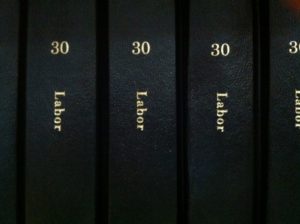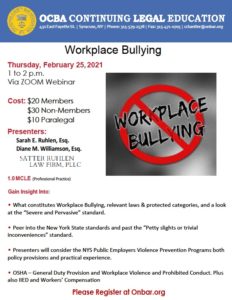Know Your Rights Under the New York State Hospitality Industry Wage Order
By Susan T. McNeil, Esq.
On March 1, 2011, the New York Department of Labor implemented the Hospitality Industry Wage Order [“HIWO”]. The HIWO is a complex group of multifaceted provisions that establish a wide variety of wage and hour rules for the hospitality industry. This is the first installment of a series of blog posts aimed at helping hospitality workers understand their rights under the HIWO and how to figure out if their employer is playing by the rules. Up first is an explanation of which employers and employees are covered by the HIWO and an explanation of the interaction between the minimum wage and the “tip credit” used by many employers to offset wage costs.
Which employers must follow the Hospitality Industry Wage Order?
Every New York employer in the “hospitality industry” must abide by the HIWO. The hospitality industry is defined to include both “restaurants” and “hotels.” Restaurants include any eating or drinking establishment that prepares and offers food or beverage for human consumption either on its premises or by catering, banquet, box lunch, curb service or counter service. The term hotel is broadly defined to include commercial hotels and motels, resorts, camps, and dude ranches, among other facilities.
What Hospitality Industry Workers are covered by the Hospitality Industry Wage Order?
“Food service workers” and “service employees” who are paid hourly and work for a covered restaurant or hotel, as described above, benefit from the HIWO. Under the HIWO, a food service worker is someone that serves food and drinks to guests and regularly receive tips. This includes servers, bartenders, and bussers. A service employee, according to the HIWO, is someone that is not a food service worker but nonetheless customarily receives tips. This includes “to-go” expediters and host/hostess, but generally not delivery drivers. Other hourly restaurant employees, such as kitchen and maintenance staff, are considered “non-service employees,” and are not covered by the HIWO. Employees who work for the Federal, State or municipal government and those who work in an executive, administrative or professional capacity are not covered by the HIWO.
What is the “tip credit” and how does it affect my hourly rate of pay?
If you are a food service worker or a service employee working in the hospitality industry in the State of New York, you must be paid at least the minimum hourly wage for all time worked up to 40 hours per week. You become eligible for overtime pay at the rate of 1.5 times your regular hourly rate, be it the minimum hourly wage rate or otherwise, if your work week exceeds 40 hours. Effective December 31, 2020, the minimum wage in Long Island and Westchester County, New York is $14.00/hour, and $12.50/hour for the rest of the state except New York City [“NYC”] where the minimum wage is $15.00/hour.
The HIWO “tip credit” provision allows your employer to reduce its out-of-pocket wage expenditure by subsidizing your hourly wage rate with the tips you earn during your shift. It is important to understand that the tip credit does not relieve your employer from its obligation to pay you at least the minimum hourly wage for 40 hours of work in a week or from paying you 1.5 times your hourly rate for hours exceeding 40 during a work week.
Here is an example of how the tip credit works:
You currently work as a server at a restaurant on Long Island or in Westchester County earning the appropriate New York state minimum wage of $14.00/hour for each hour you work up to 40 hours in a week. Under the HIWO, your employer can pay you $9.35/hour and claim a tip credit of $4.65/hour to get you to the minimum hourly wage threshold of $14.00. However, if your tips do not average out to $4.65/hour during your shift, your employer must cover the shortfall so that you earn the minimum hourly wage of $14.00. If business is slow and, as a result, tips earned during your shift do not average at $4.65/hour, your employer must make up the shortfall by reducing the tip credit and increasing your hourly rate from $9.35 so you earn minimum wage.
The same principle applies in the rest of New York State, but the amount of the allowable tip credit varies. In the remainder of New York, except NYC, the allowable tip credit is $4.15/hour provided you earn tips of at least that amount on average during your shift, so tips combined with the employer’s share of the minimum wage ($8.35/hour) gets you to the minimum wage of $12.50/hour. In NYC, the allowable tip credit is $5.00/hour provided you earn tips of at least that amount, so tips combined with the employer’s share of the minimum wage ($10.00/hour) gets you to the minimum wage threshold of $15.00/hour.
Reviewing your weekly pay stub is the best way to determine if your employer is taking unfair advantage of the tip credit. If your gross wages ((hourly rate) x (hours worked) + tips for the week) divided by the number of hours worked is less than minimum wage, it is possible that your employer has violated the HIWO.
If your employer is subject to the HIWO and you suspect a compliance issue, you should contact an attorney or the New York State Department of Labor.



